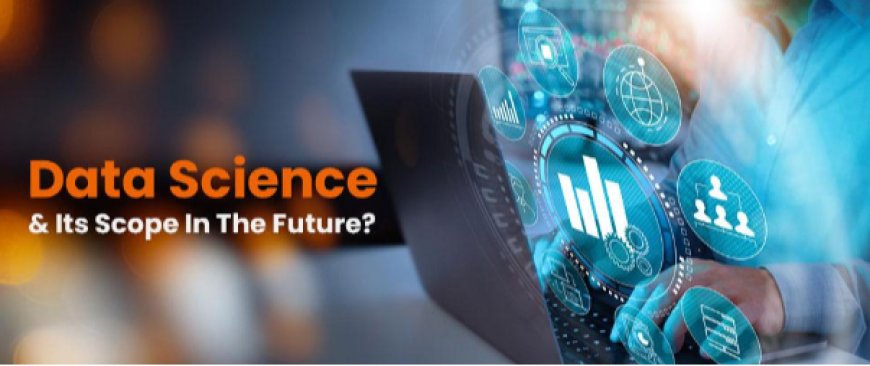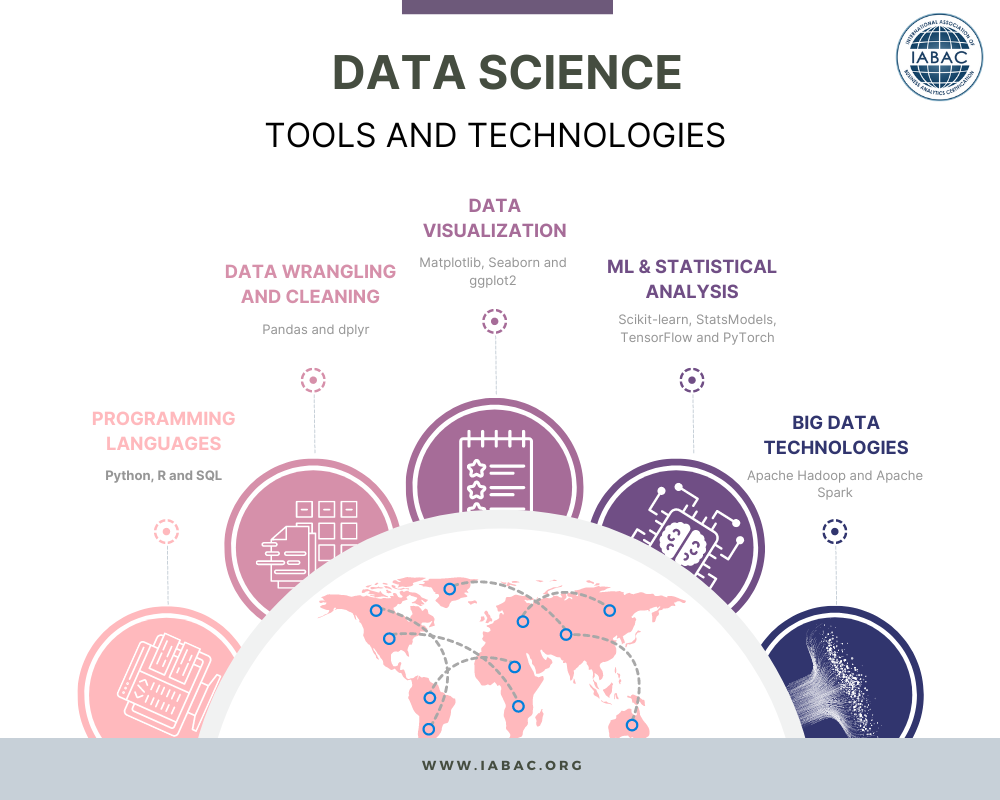The Art of Data Science
Discover the power of data science in transforming information into actionable insights. Explore methodologies, tools, and best practices. Start your journey today!

Data science is more important in today's world because it helps us make sense of all the data that's out there. Think about it - we're constantly generating data through social media, online shopping, and even our smartphones. Data science helps us organize, analyze, and understand all this information. It's like having a superpower that lets us make better decisions, predict trends, and solve problems in areas like healthcare, finance, and technology. Plus, it's behind a lot of the cool stuff we use every day, like personalized recommendations on streaming platforms or traffic predictions on maps. So basically, data science is kind of like a secret weapon that's making our world smarter, more efficient, and more awesome!
What is Data Science?
Data science is an interdisciplinary field that employs scientific methods, processes, algorithms, and systems to extract knowledge and insights from structured and unstructured data. It combines elements from various fields such as statistics, mathematics, computer science, and domain knowledge to analyze complex data sets, uncover patterns, make predictions, and drive decision-making processes.
The primary goal of data science is to generate actionable insights and solutions from data, which can be used to inform strategic business decisions, optimize processes, develop new products or services, improve efficiency, and solve a wide range of problems across different domains.
Key components of data science include:
-
Data Collection: Gathering data from various sources, including databases, sensors, social media, and other digital platforms.
-
Data Cleaning and Preprocessing: Removing noise, handling missing values, and transforming data into a suitable format for analysis.
-
Exploratory Data Analysis (EDA): Analyzing and visualizing data to understand its characteristics, and identify patterns, correlations, and anomalies.
-
Statistical Analysis and Machine Learning: Applying statistical techniques and machine learning algorithms to build models that can make predictions, classifications, or cluster data.
-
Data Visualization: Presenting insights and findings in a visually appealing and understandable manner using charts, graphs, and other visualization tools.
-
Interpretation and Communication: Interpreting the results of data analysis, drawing meaningful conclusions, and effectively communicating findings to stakeholders.
The ultimate goal of data science is to turn raw data into actionable insights that can be used to solve problems, optimize processes, develop new products or services, and drive innovation across different industries. Data scientists play a crucial role in this process, utilizing their expertise in data analysis and computational techniques to extract valuable insights and drive data-driven decision-making within organizations.
Scope of Data Science
The scope of data science is all about using data to solve problems and make decisions across many different areas. Whether it's figuring out how to predict trends in finance, diagnosing illnesses in healthcare, targeting customers in marketing, or making machines smarter in manufacturing, data science is everywhere. It helps businesses and organizations understand their data better, make smarter choices, and find new opportunities for growth and improvement. And as technology advances, the possibilities for data science keep expanding, making it a crucial field in our increasingly data-driven world.
-
Data Everywhere: Data science deals with the massive amounts of information generated every day from things like social media, online transactions, and sensors.
-
Problem Solving: It's all about solving real-world problems, like how to sell more products, improve healthcare outcomes, or predict weather patterns.
-
Smart Insights: Data science helps us understand what the numbers mean and find patterns that can lead to smart decisions.
-
Making Things Better: Whether it's making products better, services more efficient, or processes smoother, data science is about making things work even smoother.
-
Growing Field: More and more companies are hiring data scientists because they understand the value of using data to improve their businesses.
-
Technology's Friend: As technology improves, so does data science. New tools and techniques make it even easier to understand and use data effectively.
Challenges in Data Science
- Data Quality: Ensuring the quality and reliability of data is a significant challenge, as issues such as missing values, inconsistencies, errors, and biases can lead to inaccurate analysis and flawed insights.
- Data Privacy and Security: With increasing concerns about data privacy and cybersecurity, protecting sensitive data from unauthorized access, breaches, and misuse is a significant challenge in data science.
- Scaling Infrastructure: Analyzing large volumes of data requires scalable and efficient infrastructure, posing challenges in terms of computational resources, storage, and processing capabilities.
- Interpretability of Models: Building complex, interpretable and explainable machine learning models is challenging, as black-box models may lack transparency, making it difficult to understand how they arrive at their decisions.
- Talent Shortage: There is a high demand for skilled data scientists, but there is also a shortage of talent with the required expertise in data science, machine learning, statistics, and programming, posing challenges in recruiting and retaining top talent in the field.
Key Tools and Technologies Commonly Used in Data Science:

Programming Languages:
-
Python: Widely used for data manipulation, analysis, and machine learning with libraries such as Pandas, NumPy, and Scikit-learn.
-
R: Popular for statistical analysis and data visualization, with packages like ggplot2 and dplyr.
-
SQL: Essential for querying and manipulating relational databases.
Data Wrangling and Cleaning:
-
Pandas: Python library for data manipulation and analysis, providing powerful data structures and functions.
-
dplyr: R package for data manipulation, offering a consistent grammar for data manipulation tasks.
Data Visualization:
-
Matplotlib: Python library for creating static, interactive, and animated visualizations.
-
Seaborn: Python library for statistical data visualization, built on top of Matplotlib.
-
ggplot2: R package for creating elegant and customizable graphics.
Machine Learning and Statistical Analysis:
-
Scikit-learn: Python library for machine learning algorithms and model building.
-
TensorFlow and PyTorch: Deep learning frameworks for building and training neural networks.
-
StatsModels: Python package for estimating and interpreting statistical models.
Big Data Technologies:
-
Apache Hadoop: Distributed processing framework for storing and processing large datasets.
-
Apache Spark: Unified analytics engine for big data processing with support for SQL, streaming, machine learning, and graph processing.
Key Skills Required for Data Scientists:
-
Programming Proficiency: Proficiency in programming languages such as Python, R, and SQL is essential for data scientists to manipulate data, build models, and automate tasks.
-
Statistical Analysis: A solid understanding of statistical concepts and techniques is necessary to analyze data, identify patterns, and make inferences.
-
Machine Learning: Expertise in machine learning algorithms and techniques, including supervised learning, unsupervised learning, and deep learning, is crucial for building predictive models and extracting insights from data.
-
Data Wrangling: Data cleaning, preprocessing, and transformation skills are essential for handling missing values, outliers, and inconsistencies in the data.
-
Data Visualization: Proficiency in data visualization tools and techniques is important for communicating insights effectively through charts, graphs, and dashboards.
-
Big Data Technologies: Knowledge of big data technologies such as Hadoop, Spark, and distributed computing frameworks is valuable for analyzing large-scale datasets efficiently.
Future Trends in Data Science
-
Ethical AI and Responsible Data Science: Increasing emphasis on ethical considerations in data science, including fairness, transparency, and privacy, to mitigate risks and ensure the responsible use of AI technologies.
-
Automated Machine Learning (AutoML): Rise of AutoML platforms and tools simplifying the machine learning process, enabling non-experts to leverage machine learning techniques and accelerating AI application development.
-
Edge Computing and IoT Analytics: Growing adoption of edge computing for real-time processing and analysis of IoT data, enabling faster insights and decision-making at the network edge.
-
Privacy-Preserving Techniques: Advancements in privacy-preserving techniques such as federated learning and differential privacy enable data analysis while preserving the privacy of sensitive information.
-
Interdisciplinary Collaboration: Increasing collaboration between data scientists, domain experts, ethicists, and policymakers to address complex societal challenges and ensure the responsible use of data-driven technologies.
Data science is a diverse field that uses scientific methods and advanced technologies to extract valuable insights from data. It combines elements from statistics, mathematics, computer science, and domain expertise to analyze complex datasets, discover patterns, and influence decision-making processes in different industries. Important aspects include data collection, cleaning, exploratory analysis, statistical modelling, and visualization. Nevertheless, data science faces obstacles like maintaining data quality, privacy, and a shortage of skilled professionals. Moving ahead, trends such as ethical AI, automated machine learning, and interdisciplinary collaboration are shaping the future of data science, offering solutions to these challenges and fostering innovation for the greater good.











































